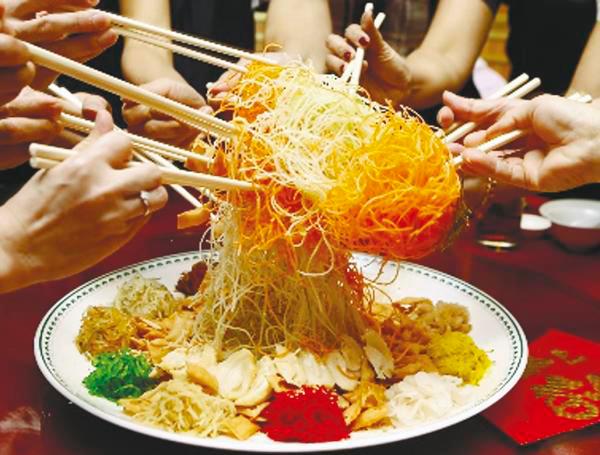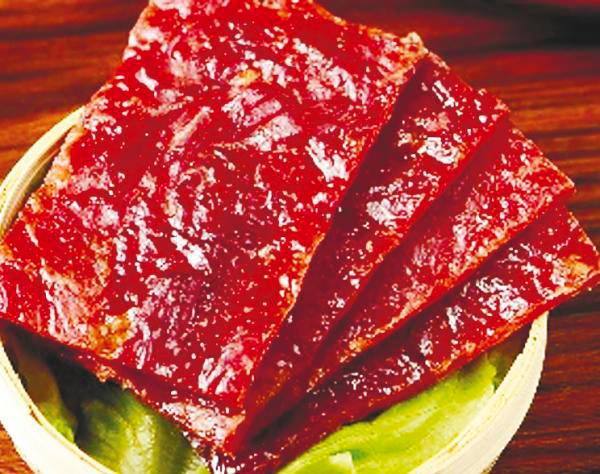CHINESE New Year is a cherished time for family reunions, exchanging of red envelopes and communal meals to strengthen social bonds.
The ancient Chinese adage “Food is the first priority for the people” (min yi shi wei tian) underscores the significance of food in Chinese culture, reflecting its rich traditions, beliefs and customs.
Therefore, it is no wonder that food carries profound symbolism during Chinese New Year, conveying deep meanings and taboos that enrich the celebration’s language and rituals.

Tradition on the table
Pineapple tarts, known as huang li bing or feng li su, are a favourite among Malaysian Chinese during Chinese New Year. Interestingly, in the Hokkien dialect, “pineapple” is pronounced as ong lai, where ong symbolises prosperity and lai represents arrival.
These delectable cookies are imbued with auspicious meanings, signifying the arrival of prosperity. They consist of a delightful combination of sweet-sour pineapple jam crafted from fresh pineapples, encased within a savoury and buttery pastry. The harmonious blend of fragrant aromas and delightful flavours makes for an irresistible culinary experience.
Nian gao (rice cake), aptly named “New Year cake”, is a traditional dish made from sticky glutinous rice. The term nian gao holds a deeper connotation, symbolising positive growth and advancement, reflecting aspirations for elevated status and enhanced success.
This dish can be enjoyed in its original form or commonly prepared by sandwiching a slice of nian gao between sweet potato or yam slices, then coating them in egg or cornstarch before frying. The golden hue of the fried layer evokes the appearance of a gold bar, symbolising wealth and prosperity.
Lao yu sheng, often referred to as “Chinese-style sashimi”, carries profound symbolism during Chinese New Year celebrations.
The term lao conveys the action of fishing or scooping up while yu sheng denotes sashimi.
In Chinese tradition, the word yu (fish) shares pronunciation with “surplus”, symbolising the desire for abundance and prosperity in the coming year.
The dish boasts a vibrant array of ingredients, including slices of salmon sashimi, carrots, cabbage, celery, ginger, peanuts and crispy crackers, creating a visually colourful presentation. All the ingredients are artfully arranged on a large platter, and everyone uses chopsticks to toss them high in the air while uttering auspicious wishes. It is believed that the higher the toss, the greater the fortune bestowed.
Bak kwa, commonly referred to as dry jerky, derives its name from the Hokkien dialect. The preparation of dried jerky involves grilling marinated pork slices over a charcoal fire. The jerky is square-shaped and boasts a vibrant red colour. In Chinese culture, red symbolises good luck and blessings.
Additionally, there is a historical significance tied to the tradition of consuming dry jerky during the New Year. In times of poverty and limited access to food, meat was a rare indulgence reserved for special occasions. The convenience of jerky slices, which are easy to carry and has a long shelf life, has since made them a popular festive treat, carrying forward the tradition of New Year’s celebrations.

Avoiding unlucky foods
To ensure an auspicious New Year, there are certain dishes that many Chinese prefer to avoid.
Bitter gourd (ku gua) is among the foods to avoid due to its association with the word ku, meaning “bitter” in Chinese. This connection leads people to steer clear of bitter gourd and any dishes containing it as it symbolises bitterness or hardship in life.
Seafood squid (you yu) is another item on the taboo list, largely due to its association with the slang term chao you yu (fired squid), which translates to “you are fired”. The negative connotation of job loss linked to this seafood makes it an inauspicious choice for most Chinese, prompting its avoidance.
Chinese culinary places significant emphasis on homonyms – words with similar pronunciation but differing meanings. The mentioned dishes represent just a fraction of the intricate tapestry of culinary symbolism.
There are a vast array of variations among the Chinese communities worldwide. As families gather around dining tables during this festive period, they participate in a tradition that bridges generations, reinforcing a sense of community and preserving heritage.
When elders offer guidance on food choices, it goes beyond mere nourishment, it is a heartfelt expression of well-wishes for a joyful Chinese New Year.
The writer is a senior lecturer at the Faculty of Languages and Linguistics at Universiti Malaya. Comments: letters@thesundaily.com










